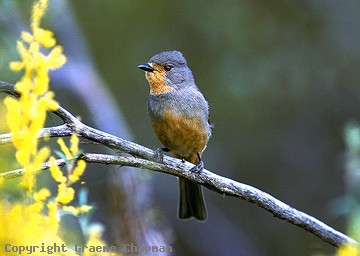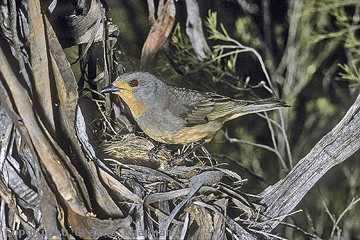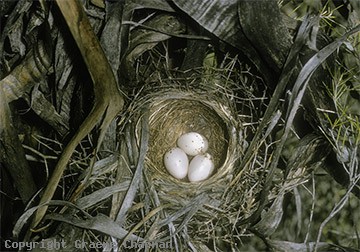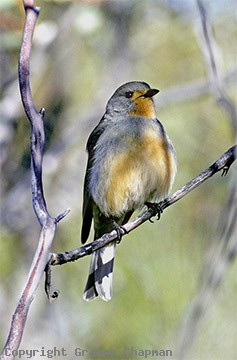
Red-lored Whistlers are quite rare and eagerly sought after by many a keen birdwatcher. Most of their mallee scrubland habitat has been cleared for agriculture, so now they have a patchy distribution, largely confined to reserves and national parks. They range from Pinkawillinie Conservation Park on northern Eyre Peninsula to as far east as Nombinnie Nature Reserve near Hillston in N.S.W.
Not just in any mallee either, they do prefer more open, stunted vegetation which includes a wide variety of plant species rather than areas dominated by taller eucalypts.The Sunset Country of NW Victoria includes a fair bit of this sort of habitat and a run down the "Bore Track" (4 WD only) would be worthwhile. Across the Murray River N of Waikerie in S.A., Gluepot Reserve (good camping) also has suitable habitat and this sort of country continues eastwards to just across the NSW border. Further east in NSW, a small, now isolated population is located in Nombinnie (Round Hill) Nature Reserve near Hillston. The birds there are quite localised and not easy to find. I used to visit Round Hill for more than 10 years before I knew they were there. Back in the 1960's they used to occur in and around Pulletop Nature Reserve just north of Griffith but they haven't been seen there for many years. When looking for Red-lored Whistlers, a good knowledge of their calls (listen on sound page) and a quiet approach are essential. They are quite shy and if you go crunching your way through the litter they hear you coming and simply fly off low to the ground and out of view.
Of all the whistlers, the Red-lored are the most "shrike-thrush like". Adult males and females are alike, they feed largely on the ground and their nests are quite substantial, usually incorporating the bark of eucalypts in the outer layer. Even the juveniles look remarkably like a young Grey Shrike-thrush, fairly plain grey, streaked below with a rusty coloured eyebrow.
Red-lored Whistler habitat is quite fire-prone and too-frequent burning is bad news for them. They are largely litter feeders and in dry environments like mallee it takes many years for a healthy litter layer to accumulate.




